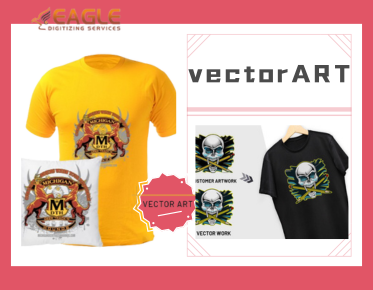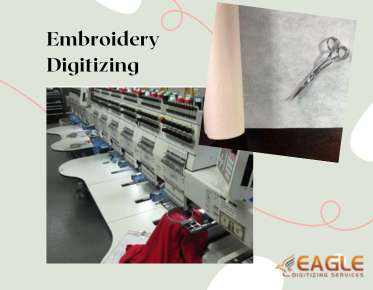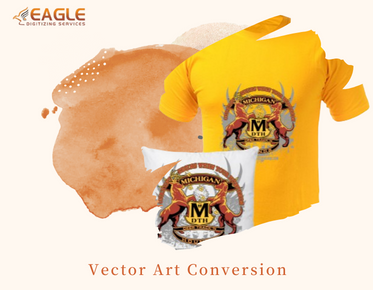Teach Smarter: Vector Graphics in Education
Enhancing Learning with Vector
Graphics
In the dynamic landscape of education, visual aids play a pivotal role in facilitating learning. Among these aids, vector graphics stand out as versatile tools that offer a plethora of benefits to educators and learners alike. From enhancing clarity to fostering interactivity, vector graphics have the potential to transform educational materials and elevate the learning experience.
The
Advantages of Vector Graphics in Education
Scalability: Perfect for Various
Screen Sizes
One of the most significant benefits of vector graphics in teaching is
their scalability. Whether viewed on a smartphone, tablet, or projector screen,
vector graphics retain their clarity and detail. This ensures that educational
materials are accessible and engaging across different devices and screen
sizes, catering to the diverse needs of learners.
Clarity and Detail: Enhancing
Understanding
Vector graphics offer unparalleled clarity and detail, making complex
concepts and information more accessible to learners. Whether illustrating
scientific diagrams or depicting historical timelines, vectors enable educators
to present information in a visually compelling manner. This clarity enhances
comprehension and retention, ultimately enriching the learning experience.
Interactivity: Engaging Learners
Interactivity is key to engaging today's digital learners, and vector
graphics provide ample opportunities for interactive learning experiences.
Through clickable elements, animations, and simulations, educators can create
dynamic and immersive lessons that actively involve students in the learning
process. This interactivity encourages curiosity, critical thinking, and
problem-solving abilities.
Accessibility: Catering to Diverse
Needs
Accessibility is a fundamental aspect of inclusive education, and vector artwork graphics offer several benefits in this regard. With their scalability and compatibility with screen readers and assistive technologies, vectors ensure that educational materials are accessible to students with diverse learning needs. Additionally, vectors can be customized to accommodate different learning styles and preferences, promoting inclusivity in the classroom.
Tools
and Software for Creating Vector Graphics
Adobe Illustrator: The Industry
Standard
Adobe Illustrator remains the industry standard for vector graphic
creation, offering a comprehensive suite of tools and features for professional
designers and educators alike. With its robust drawing capabilities and
seamless integration with other Adobe products, Illustrator enables educators
to create visually stunning educational materials with ease.
Inkscape: Free and Open-Source
For educators on a budget, Inkscape provides a free and open-source
alternative to Adobe Illustrator. Despite being free, Inkscape offers powerful
vector drawing tools and supports a wide range of file formats. Its
user-friendly interface and extensive online community make it an ideal choice
for educators looking to create high-quality vector graphics without breaking
the bank.
Canva: User-Friendly Design
Platform
Canva is a user-friendly design platform that simplifies the process
of creating vector graphics for educators with limited design experience. With
its drag-and-drop interface and library of customizable templates, Canva allows
educators to quickly create visually appealing educational materials, including
presentations, infographics, and worksheets.
Vector: Simplified Vector Design
Vector is a simplified vector design tool that is perfect for educators who are new to graphic design. With its intuitive interface and basic drawing tools, Vector makes it easy to create simple vector graphics for educational purposes. While lacking some of the advanced features of other vector graphic software, vectorizing is an excellent option for educators seeking a straightforward and user-friendly design solution.
Incorporating
Vector Graphics in Educational Materials
Creating Visually Appealing Presentations
Vector graphics can enhance the visual appeal of presentations, making
them more engaging and memorable for students. Whether used to illustrate key
concepts, provide visual aids, or enhance slide transitions, vectors add depth
and clarity to educational presentations, fostering a more immersive learning
experience.
Designing Infographics for Data
Visualization
Infographics are powerful tools for conveying complex information in a
concise and visually appealing manner. By using vector graphics to create infographics,
educators can transform dry statistics and data into compelling visual
narratives. Infographics facilitate comprehension and retention by presenting
information in a format that is easy to understand and visually stimulating.
Developing Educational Games and
Activities
Gamification is a proven strategy for increasing student engagement
and motivation, and vector graphics play a crucial role in the development of
educational games and activities. Whether designing interactive quizzes,
puzzles, or simulations, vectors enable educators to create dynamic and
immersive learning experiences that captivate students' attention and reinforce
learning objectives.
Designing Worksheets and Handouts
Worksheets and handouts are staple educational materials used to
reinforce learning concepts and provide practice opportunities for students. By
incorporating vector graphics into worksheets and handouts, educators can make
these materials more visually appealing and engaging. Vectors can be used to
illustrate instructions, provide visual aids, or create interactive elements
that encourage active learning.
Illustrating Concepts and
Processes
Illustrations are invaluable for clarifying complex concepts and processes in subjects such as science, mathematics, and geography. Vector graphics excel in this regard, allowing educators to create detailed and accurate illustrations that enhance understanding. Whether depicting the stages of a chemical reaction or the anatomy of a cell, vectors enable educators to convey information with precision and clarity.
Using
Vector Graphics in Digital Textbooks and E-Learning Platforms
Enhancing Textbook Layouts with
Visuals
Digital textbooks offer unique opportunities for incorporating vector
graphics into educational materials. By enhancing textbook layouts with visuals
such as diagrams, illustrations, and interactive elements, educators can create
immersive learning experiences that captivate students' interest and facilitate
comprehension.
Creating Interactive Modules and
Lessons
E-learning platforms provide a versatile medium for delivering
interactive and engaging lessons to students. By leveraging vector graphics,
educators can create interactive modules and lessons that allow students to
explore concepts, solve problems, and engage with course content in meaningful
ways. This interactivity promotes active learning and fosters deeper
understanding.
Developing Engaging Quizzes and Assessments
Quizzes and assessments are essential tools for evaluating student
learning and comprehension. By incorporating vector graphics into quizzes and
assessments, educators can make these activities more visually appealing and
engaging for students. Vectors can be used to create interactive question
types, visual prompts, and animated feedback, enhancing the overall assessment
experience.
Integrating Vector Graphics into
Learning Management Systems (LMS)
Learning Management Systems (LMS) serve as central hubs for delivering educational content and managing student interactions. By integrating vector graphics into LMS platforms, educators can enhance the visual appeal and usability of course materials. Vectors can be used to create custom course banners, navigation icons, and multimedia elements that elevate the overall learning experience.
Real-Life
Scenarios: Successful Implementation of Vector Graphics in Education
Scenario 1: Transformative Visual
Learning Tools
In this case study, a school district implements vector-based visual
learning tools across various subjects and grade levels. By incorporating
interactive animations, diagrams, and infographics into lesson plans, educators
observe significant improvements in student engagement, comprehension, and academic
performance.
Scenario 2: Interactive
E-Learning Modules
A university adopts vector graphics to develop interactive e-learning
modules for distance education courses. By leveraging vectors to create dynamic
simulations, virtual labs, and multimedia presentations, instructors enhance
student learning experiences and foster a deeper understanding of complex
concepts.
Scenario 3: Data-Driven
Infographics for Understanding
A high school science teacher utilizes vector graphics to create data-driven infographics that visually represent scientific concepts and experimental results. By presenting data in a visually compelling format, students gain a deeper understanding of scientific principles and develop critical thinking skills through data analysis and interpretation.
Best
Practices for Using Vector Graphics in Education
Maintaining Consistency in
Design
Consistency in design is essential for creating cohesive and
professional-looking educational materials. Educators should establish style
guidelines for vector graphics, including color schemes, typography, and
iconography, to ensure consistency across all materials.
Optimizing Graphics for
Accessibility
Accessibility should be a priority when creating educational materials
with vector graphics. Educators should use high-contrast colors, clear
typography, and descriptive alt text to ensure that graphics are accessible to
students with diverse learning needs, including those with visual impairments.
Ensuring Compatibility Across
Devices
Educational materials should be compatible with a variety of devices
and screen sizes to ensure accessibility for all students. Educators should
test vector graphics on different devices and platforms to ensure optimal
viewing experiences for students using smartphones, tablets, laptops, and
desktop computers.
Incorporating Feedback and
Iteration
Feedback from students and colleagues is invaluable for improving the
effectiveness of educational materials. Educators should solicit feedback on
vector graphics from students and colleagues and use this feedback to iterate
and refine designs to better meet the needs of learners.
Training Educators on Graphic
Design Basics
Educators should receive training on basic graphic design principles and techniques to effectively create and use vector graphics in educational materials. By equipping educators with graphic design skills, schools, and institutions can ensure that educational materials are visually engaging and effective in facilitating learning.
Challenges
and Solutions in Using Vector Graphics in Education
Time and Resource Constraints
Educators often face time and resource constraints when creating
educational materials with vector graphics. To address this challenge, schools
and institutions can provide access to design software, templates, and training
resources to support educators in creating high-quality graphics efficiently.
Technical Challenges in
Implementation
Technical challenges, such as compatibility issues and software
limitations, can hinder the effective use of vector graphics in education.
Educators should stay informed about advancements in design software and
technology and seek support from IT professionals or instructional designers to
overcome technical hurdles.
Addressing Accessibility Needs
Ensuring accessibility is a priority when using vector graphics in education, but educators may encounter challenges in meeting the diverse needs of students with disabilities. To address this challenge, educators should collaborate with accessibility experts and leverage assistive technologies to make educational materials inclusive for all learners.
Future
Trends: The Evolution of Vector Graphics in Education
Augmented Reality (AR) and Virtual
Reality (VR) Integration
The integration of augmented reality (AR) and virtual reality (VR)
technologies is poised to revolutionize education by creating immersive
learning experiences with vector graphics. Educators can use AR and VR to bring
educational concepts to life, allowing students to interact with virtual
environments and manipulate vector-based objects in three-dimensional space.
Personalized Learning
Experiences
Personalized learning experiences tailored to individual student needs
are gaining traction in education. Vector graphics can play a key role in
personalization by allowing educators to create custom learning materials that
cater to students' interests, learning styles, and proficiency levels,
enhancing engagement and academic achievement.
Artificial Intelligence (AI) for
Adaptive Graphics
Artificial intelligence (AI) technologies hold promise for creating adaptive graphics that dynamically adjust to individual student needs and preferences. AI algorithms can analyze student interactions with vector-based educational materials and provide personalized feedback and recommendations for optimizing learning experiences.
Maximizing Learning Potential with Vector Graphics
Vector graphics offer unparalleled opportunities for enhancing teaching and learning in the education sector. From improving clarity and engagement to fostering interactivity and inclusivity, vectors have the potential to transform educational materials and maximize the learning potential of students. By embracing vector graphics, educators can create dynamic and immersive learning experiences that inspire curiosity, creativity, and lifelong learning.
Empower yourself as an educator by incorporating vector graphics into
your teaching practices. Explore the wide range of tools and software available
for creating vector graphics, and consider using Eagle Digitizing's vector conversion services to streamline the process.
Experiment with incorporating these graphics into your lesson plans,
presentations, and educational materials. By embracing vector graphics, you can
revolutionize your teaching approach and unlock new opportunities for engaging
and inspiring your students. Start your journey toward transforming education
with vector graphics and Eagle Digitizing today!



